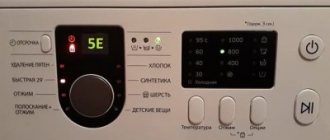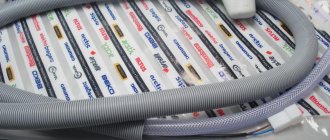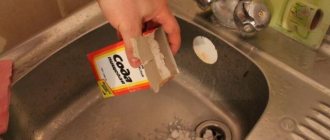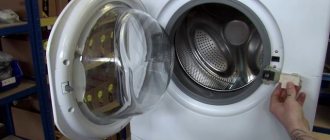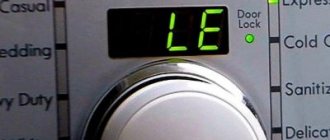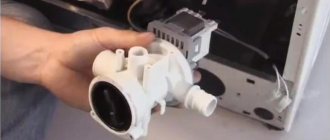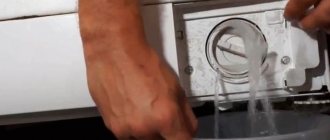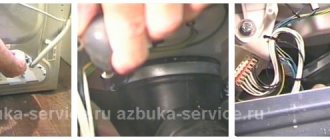Varieties
Before you begin lengthening, you need to familiarize yourself with the main types of hoses.
Jellied
The inlet hose is a device used to connect the washing machine to the water supply system. It is with its help that water is supplied to the internal elements of the system. Such products operate under high pressure conditions and therefore reinforcement technology is used in their manufacture.
The main material from which the filler tubes are made is polyvinyl chloride, the surface of which is covered with nylon.
The connecting components of the structure can be made of steel, aluminum or plastic. Budget models use plastic fittings that are unscrewed and screwed on manually, without the use of additional tools. When working with steel or aluminum products, you will have to use a special wrench.
Drain
A drain hose is used to drain liquid from washing equipment. The following types of drain tubes are distinguished:
- Standard. Such products are produced in a certain length, the length of which can reach five meters.
- Telescopic. These are corrugated products that can easily be stretched to the desired length. When connecting telescopic tubes, you must be very careful so that they do not bend. The kinks may burst under strong pressure.
- Polypropylene. They are made from durable polypropylene. At each end of the product there are special fittings with which a device for washing clothes is connected.
Purpose and features of the connection
Before you start extending the drain hose, you need to become familiar with its main purpose and the features of its connection. This design is used to drain water from washing equipment into the sewer system. The efficiency of draining liquid depends not only on the integrity of the structure, but also on the characteristics of its connection to the sewerage system and the washing machine. To connect the tubes, connecting elements - fittings - are used. They are installed on the hose and ensure its secure fastening.
For additional fixation, use a special rubberized or metal coupling. It is installed to the pipe responsible for removing liquid.
When do you need to lengthen and how much is possible?
As a rule, the standard length is no more than 2 m, but usually about one and a half. If it is less, the drain hose will need to be extended.
Sometimes this needs to be done due to the location of the machine in the room and the location of the sewerage and water supply taps. Alternatively, you can purchase a longer one as a replacement.
Expert opinion
I work in the household appliance repair industry. Extensive experience in restoring washing machines and dishwashers.
Ask a Question
Important! Preference should be given to purchasing in specialized stores and supermarkets.
To replace it, you will need to disassemble the machine, which requires certain skills and knowledge. You can extend the drain without disassembling the housing by connecting 2 (new and existing) together.
Methods for organizing drainage
Draining water can be done in several ways. The thoughtful design of the drainage system largely depends on this. Let's look at the most popular options:
Drain into a sink or bathtub
For this method, it is enough to insert the water drain hose into the holder and direct it to the bathroom or sink. This method is used if it is impossible to connect to a sewer or if the machine is temporarily used in this place.
Important! This option has its drawbacks: the inability to use the bathtub/sink when doing laundry, contamination due to waste water, and the unpleasant appearance of the device.
Connection to the sewerage system using a siphon. The best option for many cases. Ensures sufficient sealing and ease of use.
Important! The disadvantage of such a system is that it takes up a certain space.
Installation directly into the sewer through a cuff
In this method, it is necessary to ensure that there is a reserve length of the drain hose of the washing machine. Do not allow the hose to be tight, as vibrations can damage the connection, leading to leakage.
Siphon with check valve
This connection method is rarely used nowadays, since most apartments do not have a special place for devices such as a washing machine or dishwasher.
Important! A mechanism of this type is significantly superior to the previous ones, since it has a system of protection against unpleasant odors and the return of water into the equipment.
Important! Do not overload the washing machine to prevent expensive mechanisms from breaking down. Follow the link and learn how to calculate the weight of bedding for washing.
Through siphon
The siphon, or elbow, is endowed with an important function - by closing standing wastewater, it isolates the kitchen or bathroom from odors from the sewer. Modern siphons are already equipped with a side pipe to which the drains of washing machines and dishwashers are connected.
If you got an old or cheap siphon that does not have a side pipe, replace it with the one you need. A sink that has a small cabinet or a decorative ceramic support may not allow connecting the SMA through a siphon - it does not have free space for connecting the washing machine drain. A small washbasin will also not allow you to install additional pipes - there will not be enough free space under it. The disadvantage of the SMA siphon drain is the gurgling of waste water when the machine is operating.
To connect the drain through the siphon, the plug is removed from the latter. A layer of sealant or silicone glue is applied to the pipe at the connection point. The drain hose (or corrugation) is put on. A “worm” type clamp is placed and tightened at the connection point.
Connect directly
Direct connection is made using a tee or insert. One (straight) outlet of the tee is occupied by a sink, toilet, bathtub or shower, the second (corner) is occupied by the drain channel of the washing machine. The side outlet to which the MMA drain is connected is not located at a right angle, but is raised upward - in case the seal is not at hand.
The insertion is made directly into a pipe for which it is impossible to fit a tee (for example, it is asbestos or cast iron). If we are talking about an apartment building, and even on one of the lower floors of the building, it is recommended to shut off the water supply on this line in your entrance. Insertion, as well as removal from the riser, is carried out only during the overhaul of the apartment.
To connect the drain hose or pipe to the tee, use a rubber cuff or a homemade rubber gasket cut from old car inner tubes.
The fact is that drain hoses and tees at the point of their connection vary significantly in diameter. Without a gasket or cuff, wastewater will flow out - the SMA drain pump creates considerable pressure.
Through plumbing
Connecting the SMA drain through the plumbing means ensuring that laundry waste (wastewater) is discharged directly into the bathtub, sink or toilet, and not bypassing it, as with other methods. This requires frequent washing after a number of washes. Decaying waste that covers the surface of a bathtub or sink with a film emits an unpleasant odor and spoils the appearance of the plumbing fixtures.
To ensure that the drain hose is securely fixed to the bathtub or sink, use a hanger attached to the faucet or other butt joints on which it is hung. For example, on a sink, the hose is suspended from the base of the faucet.
A connection that is not completely strong can break off when the SMA removes the spent detergent solution before rinsing. The pump pumping out wastewater works unevenly, the hose will twitch and may come off. If this happened, and more than one bucket of water spilled out, then insufficient waterproofing of interfloor ceilings and not quite high-quality tiling (or tiles) will lead to leaks in the neighbors below, even in the bathroom, which is considered the safest room in terms of leaks.
A small sink may overflow with waste water. The fact is that washing technology is developing, operating time is decreasing. Water should be added - and pumped out after washing - as quickly as possible. Overflow is the fate of sinks and shower trays, in which the siphon is clogged with fatty deposits. Water does not flow into them - it seeps through.
When washing, you will not be able to fully wash yourself or go to the toilet. The water pumped out and flowing out of the tap (or tank) may ultimately exceed the capacity of the general drain.
Horizontal bend
This is a long section of drain hose located horizontally, often lying on the floor near the wall. This will ensure that there is an unpleasant smell from the sewer in the washing machine. To prevent this smell from spoiling the laundry that you did not remove in time after washing, the hose is raised and hung on the wall using any fastener (except through) at least 15-20 cm. You can place an elbow in any place - an S-shaped bend, in which standing water insulates the SMA from sewer odor.
It’s even better when a riser or “podium” is equipped for the SMA at the same height - the pump will work without extra effort, and the bend can be located next to the machine. The hose is positioned so that its space up to the bend is not filled with waste water. The length of the drain hose or pipe can be almost any.
In some cases, a separate water seal is installed near the main sewer pipe - instead of an S-shaped bend. The dimensions of the pipes at the joints are adjusted to each other using rubber, silicone or sealant for the purpose of sealing.
Checking the washer for leaks
There are five things that must be checked after installing the washing machine:
- If the water drain pipe is connected under the sink in the kitchen, you should make sure that it is not connected to the washing machine in a straight line, without a bend. The hose, which is inserted into the U-shaped bend of the sink, must first rise to a height of 15 cm before lowering down to the machine. Otherwise, water will flow directly into the washer.
- You need to make sure that there is no leakage anywhere. If you need to specifically connect the inlet or drain hose, you need to carefully monitor the areas where they are connected to drainage and water supply.
- Fill and empty the washing machine several times to see how it works. Even if everything went without leaks, you need to check these areas again after a certain time. Perhaps a slow and almost imperceptible leak has formed here, which in the future can cause significant damage (when it is necessary to pay for the restoration of the premises in the apartment below, which was flooded).
You also need:
- Make sure the inlet hose is not too tight. Over-tightening causes the silicone seal between the faucet or water valve and the hose connection to become severely compressed and deformed. Tighten it by hand, and then just tighten it a little more. Don't overdo it.
- Make sure there are no kinks anywhere. If the equipment is already connected, you may not notice that the filling or draining tubes are bent. Inlet hoses are the most prone to fractures, especially when there is a connection with hot water supply.
The final check of the quality of the drain connection can be done without laundry.
Set some washing mode. Then, when the washing machine is filled with water and begins to wash things, you need to press the cancel key and carefully check whether the water is pouring out correctly.
So, following the tips and instructions that are described in the passport for the purchased washing machine, you can connect the equipment to the drain yourself. After the measures taken, you should definitely check how the washing machine functions in idle mode and ensure that all joints are tight.
Carrying out the procedure
First of all, you should make sure in advance that you have all the necessary parts in stock. This list includes:
- extension hose;
- special connector;
- clamps for fastening;
- screwdriver and other necessary tools.
First you need to put clamps on the ends of both hoses, then insert the end of the one that is connected to the washing machine into the connector on one side. The new hose is secured on the other side, now carefully tighten the clamp with a screwdriver. Fixing is not difficult, you just need to make sure that it does not slip off the connector.
After the process is completed, the machine can be connected to the sewer, and then the operation can be tested during washing. When the machine drains the water, see if the connection area leaks. This problem usually occurs if the ends are poorly secured and water seeps through the holes, but it is quite possible to prevent it at the work stage.
We suggest you familiarize yourself with How to open the door of an indesit washing machine
If you don’t want to waste time and lengthen the drain hose by removing the old one, this method will be the most convenient option and is suitable even for those who have never performed such a procedure. Proper organization of water drainage is the key to your peace of mind. This will help avoid water leaks from under the machine and unpleasant odors caused by stagnation or drawing in liquid from the sewer system.
Troubleshooting drainage system problems
It is impossible to use the washing unit for its intended purpose when problems arise in the drainage system. You can handle some of them yourself.
Table. Malfunctions and ways to eliminate them.
- Symptoms of a problem
- Cause of failure
- How to fix the problem
| Failure in the program, a strong hum when the machine is operating, a decrease in the drain speed, the machine turns off when switching to draining water | Drain hose clogged | Cleaning the hose |
| Unpleasant smell from clothes, poor drainage, pump malfunctions | Filter dirty | Cleaning the filter |
| Water is pumped out, but flows out slowly, the pump motor hums, but the water does not drain, the pumping system does not function | Pump malfunction | Pump repair or replacement |
How to clean a drain hose
The drain tube may become clogged due to foreign objects getting into it. Most often, threads from clothes, fluff, lint and hair accumulate there, which form a blockage that prevents water from draining. There are two ways to clear a clog in the drain hose.
Using chemicals (in tablet, powder and liquid form), as well as baking soda or soda ash.
You can take a glass of soda and put the powder in the drum. After this, select the washing mode at a temperature of 90 degrees on the control panel. Water mixed with soda and heated to this temperature perfectly removes dirt adhering to the inner surface of the hose. This cleaning method is good because you don’t have to remove the hose.
Mechanical cleaning. In this case, the removed hose is cleaned with a narrow brush attached to a wire. Cleaning should be done from both ends of the drain tube. After such treatment, the remaining dirt is washed off with running water. To be more sure of the result, you can soak the hose for a couple of hours in citric acid diluted in warm water.
After installing the hose in place, it is recommended to carry out a test wash without clothes at maximum temperature. In this case, you should add citric acid to the detergent reservoir, which will perfectly remove scale from the parts of the washing machine.
Cleaning the filter
Removing contamination from the drain filter is not that difficult. It's easy to find. In all models it is located at the bottom of the washing machine body, on the right or left. Usually the compartment where the filter is located is closed with a decorative cover that has the same color as the unit itself.
How can I clean the filter?
- You need to open the plastic cover.
- It is better to place a cloth that absorbs water well on the floor where the filter is located. This is due to the fact that some water (dirty) will flow out of the hole.
- For the same purpose, you need to place a water container under the compartment.
- The lid is unscrewed.
- The filter is removed.
- It is necessary to manually remove large contaminants and then rinse the filter under running water.
- By sticking your hand into the hole, you can check for foreign objects on the impeller. They can be removed with your fingers.
- The filter returns to its place. It is important to ensure that it is installed straight along the thread. The part is screwed tightly to prevent water leakage. But over-tightening can strip the threads.
In addition to the listed types of blockages, malfunctions in the washing machine can occur due to a plug of dirt formed in the sewer. To fix the problem, you will have to clean the pipe or (more often) the connection point of the drain hose.
When to extend the hose
In older houses, the size of bathrooms and kitchens is modest and does not always allow convenient placement of a large washing machine next to communications. In addition, the devices are usually equipped with drain systems of a standard size and their length does not exceed 1.5 m. Therefore, there is often a need to lengthen them.
Before starting this operation, it is important to take into account some technical features of the device. For high-quality pumping of waste water, the drain hose should be located at a height of up to 1 m above the floor level. Otherwise, the power of the drain pump will not be enough to completely remove the soap solution from the tank, and the liquid will stagnate inside.
When connecting the device, the drains are positioned so that they are not in a tense state. In this case, the top point of the hose should be located 60 cm above the bottom. This value may differ for different models and manufacturers. All these features are described in detail in the manual for the device.
What are they?
Hoses are distinguished:
- Bulk - for supplying water. Serve as a link between the water pipe and the machine. They come in rubber, reinforced and with the Aquastop system. The reinforcement is made of metal or nylon. They all have different service life and cost.
- Drains - for draining water. These are polypropylene products. At their ends there are fittings for connection. The market offers options:
- The maximum length is 5 m. Can be connected to each other.
- In the bays. The problem is blockages due to dirty water.
- Telescopic - easy to set to the desired length.
- Aqua-stop - electronic and mechanical type. With protection against leaks. The disadvantage is the high cost.
How to extend the drain hose
If, after purchasing a washing machine or moving it to a new location, it turns out that the length of the drain hose to connect the drain to the sewer is not enough, you can solve the problem by extending the hose to the required size. This is exactly the method that car owners most often resort to without the help of specialists.
Having determined the distance to the connection point with the sewerage system by which it is necessary to increase the hose, you need to purchase a segment of the required length and diameter.
The next stage is connecting the two parts together using an extension cord. Reliable connection is ensured by adapter couplings. The ideal option would be if the diameters of the connecting parts of the hose match. In this case, a coupling is used, both ends of which have a diameter of ½ or ¾ inches (19 or 22 mm, respectively). If tubes of different sections need to buy a ½ by ¾ reducing coupling (or 19 by 22 mm, respectively). When installing a connection, you need to take care of its reliability. For this purpose, both ends of the drainage tube are crimped using metal clamps, which must be placed on it in advance, on both sides of the adapter. Having securely fixed the clamps and installed the drain pipe to the required height, you should check the connections for leaks while the unit is operating.
How to decide on the length
If you definitely decide to purchase a drain hose designed for your washing machine, you should pay attention to household appliances or plumbing stores. Before purchasing, it is best to measure the original length and the missing part so as not to make a mistake with your choice. Using a tape measure, you need to take measurements, imagining in advance how the finished hose will run from the base of the machine to the pipe. To be safe, it is worth leaving an extra part so that it is not strained.
A standard modular hose is usually divided into sections up to 0.5 meters long, depending on how long you need, just ask your dealer to cut the part you need. In some stores you can find ready-made options with the required length, but they will cost a little more.
In addition, you must definitely purchase a special connector necessary for reliable joining of the two ends. This is a standard plastic tube into which both ends are inserted before tightening with clamps.
Drain hose connector and clamps
Replacing the drain hose in a washing machine with your own hands
Replacing the washing machine drain hose may be necessary in several cases. Let's say you bought a washing machine and the drain hose turned out to be short, you can lengthen the drain hose, or you can buy a longer drain hose and replace it. Another reason for replacing the drain hose may be that it is worn out or broken. Perhaps you accidentally placed something heavy on it and a hole appeared in the hose. Also, over time, the drain hose itself becomes overgrown with dirt and scale inside, and an unpleasant odor may come from it. In this case, it is also better to replace it. If it is not possible to install the drain hose at the required height or the height is too low for the “siphon effect” to disappear, it is necessary to install an anti-siphon - a check valve for the washing machine.
Changing the drain hose in a washing machine with your own hands is not very easy. If the inlet hose is enough, just unscrew it and put a new one in its place. Then the drain hose is attached to the pump and passes through the body of the washing machine, which entails a small disassembly of the washing machine itself. But don’t worry, everything is not that scary, we will describe step by step the entire sequence of changing the drain hose with accompanying photographs and videos.
Before you begin replacing the drain hose, you must first drain the remaining water from the washing machine. To do this, remove the small cover located at the bottom of the washing machine and unscrew the drain filter. This operation must be done for all models of washing machines.
LG, Samsung, Beko, Indesit, Ariston, Ardo, Whirpool, Candy
The drain hose of these washing machine models is much easier to change than other brands. With machines of these brands, access to the drain hose is very easy; you do not need to remove covers or walls, because the drain can be accessed through the bottom of the machine.
Tilt the washing machine on its side for easy access to the drain pump. It is most convenient to place the washing machine on its side. Next you need to disconnect the end of the hose from the pump; to do this, take pliers and use them to loosen the clamp.
Then pull out the hose. Now the hose remains attached only to the body.
Remember how the hose is attached to the body and only then completely disconnect it.
Now that the old hose is disconnected, you need to install the new one. To do this, first insert the hose in the same way as the old one into the washing machine (But do not attach it to the body). Then connect one end of it to the pump using a clamp. If the pump has been removed, it must be reinstalled. And only after the hose is attached to the pump and it is in place, attach the hose to the body.
Electrolux and Zanussi
To change the drain of these washing machines, we will need a little more effort, because we will no longer have access to the hose through the bottom, and therefore we will have to remove the back wall.
First, let's remove the top cover, to do this, unscrew the two screws that are located on the back and push the cover back, after which it can be easily removed. Now unscrew the bolts holding the back cover. But we won’t be able to remove it right away, because it’s held in place by the filler valve. In order for us to remove the cover to the side, we need to unscrew the bolts securing this valve. For convenience, it is best to remove the inlet hose.
After this, the back wall of the machine can be safely removed. Now disconnect the drain hose from the pump by loosening the clamp (similar to the above washing machine models). Next, we remember how the drain is attached to the walls of the washing machine, or better yet, take photographs. Now we detach it from the walls and put it aside.
Now is the time to get a new drain hose. First of all, we throw it through, as we did earlier, lay the old hose (we do not fasten it) and attach its end to the pump and fix it with a clamp. Next, attach the hose to the body of the washing machine. We install the back cover, the fill valve on it and the top cover in place. We connect the machine to the water supply and sewerage and carry out a test wash. There should be no leaks at the connection points.
Bosch, Siemens, AEG
In these washing machines, replacing the drain hose requires even more effort than in all of the above models. In order to do this, we will need to remove the front wall of the machine, which entails the removal of some elements.
The first step is to remove the powder dispenser. Next, remove the bottom panel and drain the remaining water if you have not already done so. Now we need to disconnect the cuff from the front wall; to do this, remove the clamp that holds it on the cuff using a slotted screwdriver. Remove the cuff from the front wall so that it is not in the way of removing it.
Next, unscrew the bolts that secure the front wall to the body of the washing machine; they are located from top to bottom. After this, the front wall hangs on special hooks, but it cannot be removed because it is connected by wires leading to the loading hatch lock. There are two options: first, simply unscrew the bolts securing the door lock; and second, carefully move the front wall to a distance so that your hand can fit between it and the washing machine body and pull out the wire that fits this lock.
To remove the front wall, you need to lift it up a little and pull it towards you. It will be removed from the place with the hatch. Once you have removed it, set it aside and let's start changing the drain hose.
Here we do everything by analogy with other washing machines. Disconnect the drain from the pump by loosening the clamp. Next, we remember how the hose is routed along the body of the washing machine and disconnect it. We throw a new one on the same principle, but do not fasten it. Now we put the end of the drain hose on the pump and tighten it with a clamp. Next, the hose needs to be secured to the body of the washing machine, similar to the old one.
Before putting the washing machine back together, check the tightness and correct connections. Now we put on the front wall, insert the lock, put on the cuff and screw it into place. In a word, we put the machine back to its original state in reverse order.
Replacing the drain hose on a top-loading machine
In vertical washing machines, changing the drain hose is no more difficult than in horizontal-loading machines. The only difference is that the side wall of such a machine needs to be removed. To do this, unscrew the bolts that hold it, you can find them on the adjacent sides of the washing machine (back and front). After you unscrew the wall, remove it and put it aside. Inside the washing machine you will see a drain pump with a hose connected to it.
Next, before removing the drain hose from the washing machine, remember its location and attachment to the walls of the washing machine. After this, loosen the clamp and disconnect the hose from the drain pump. After this, unfasten the hose from the body and move it to the side. Then, by analogy, lay a new drain hose and connect it to the pump, securing it with a clamp. After this, attach the drain hose to the body of the washing machine.
Next, you need to put the side wall of the machine back on and do a test wash. If you notice a leak from the bottom of the washing machine, then most likely you have not secured the hose properly.
In the video below you can see replacing the drain pump in a washing machine. In our case, you can see how the drain hose is removed.
Washer to sewer pipe
I live here Registration: 08/04/07 Messages: 72 Thanks: 0 Address: Moscow What are the ways to connect a washing machine to a sewer pipe? The diameter of the sewer pipe is 50mm. I was thinking of somehow attaching a plastic pipe about 30mm to it, fixing it at an angle to the wall and throwing a hose from the washing machine into its upper end.
not sure, but I know something potap said: ↑ The diameter of the sewer pipe is 50mm. I am interested in the method of connecting an inclined plastic 30mm pipe and a lower horizontal 50mm sewer pipe. 1. For the 50th pipe, rubber plugs with a hole for a Stiralkin hose are sold. 2. The washing machine hose must be attached to its rear wall at a height slightly above the middle of the drum, for which there are special tools.
fasteners on the same back wall - otherwise it won’t be able to draw water. Or it will be topped up all the time. This is especially true for people who have a water supply meter and a septic tank. Household stores sell special hoses for machines of different lengths; they are easy to change; they are secured to the machine with a clamp. I had to extend the drain hose; I bought a long hose, but it wasn’t enough, so I connected two existing ones. I cut off the metal-plastic material, stuffed it into rubber bands, and tied it with ordinary clamps - it’s been going for three years, the flight is normal.
Additional Tips
If you had to expand or change parts, do not forget to check whether your machine has enough cord to connect to the mains. If the cord is too short, or, on the contrary, the outlet is far away, then you need to pay attention to this point. It is better not to use extension cords to connect the washing machine to the network. This is fraught with serious damage: such extension filters often cause a fire.
Now you know how to extend the drain and intake hose of a washing machine. And no matter where your washing machine is, you will always find a way to successfully connect it to all communications.
